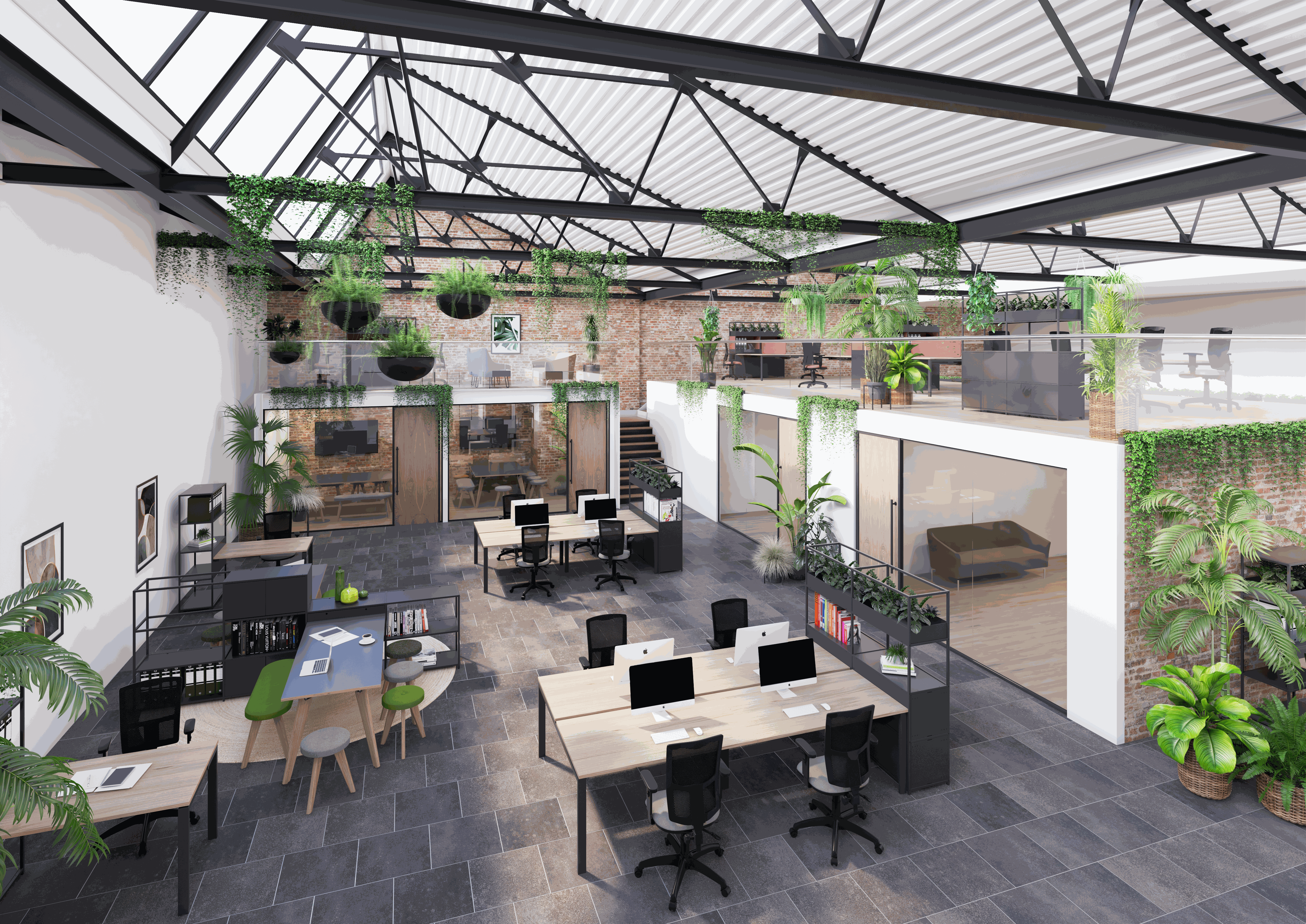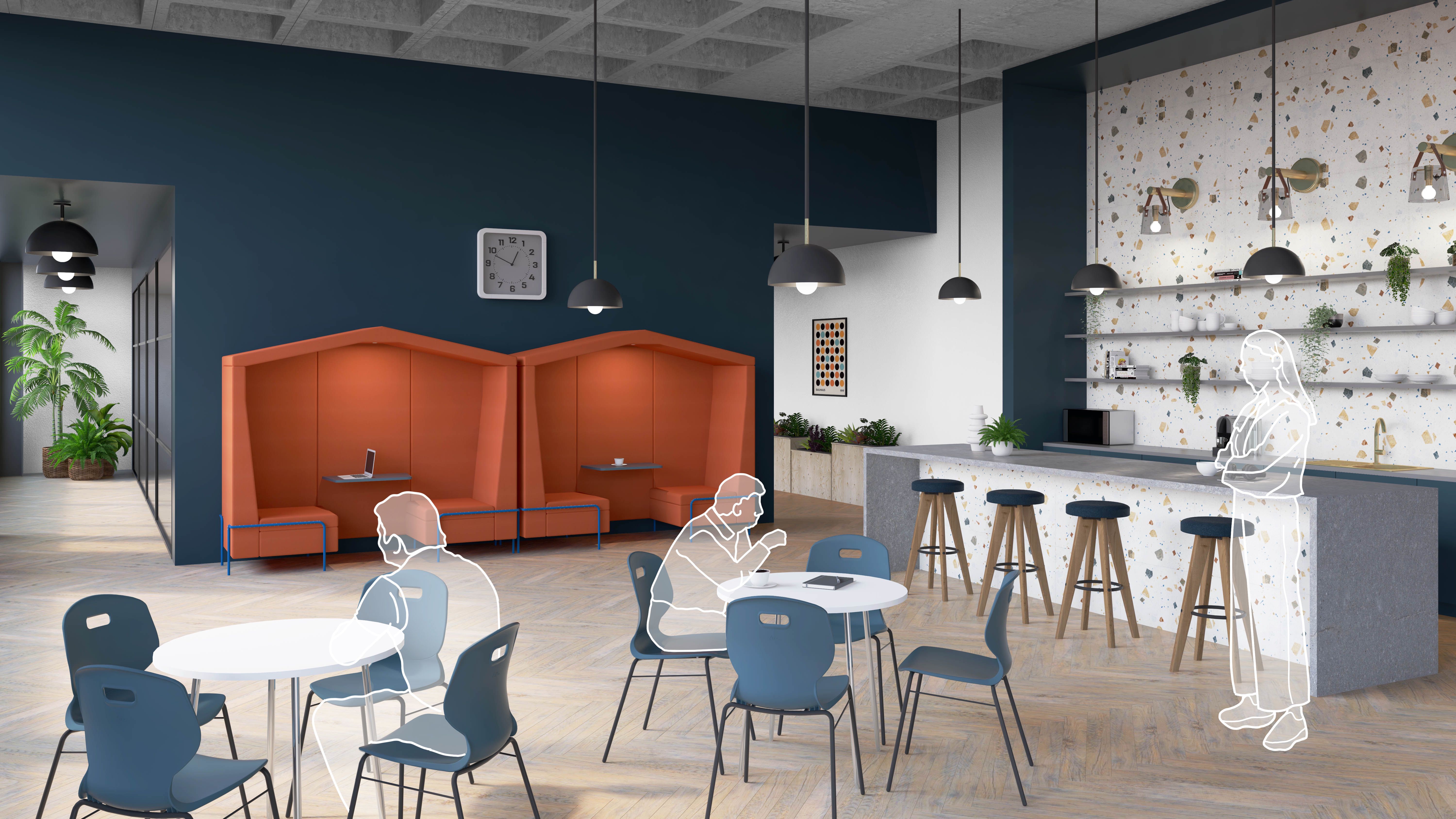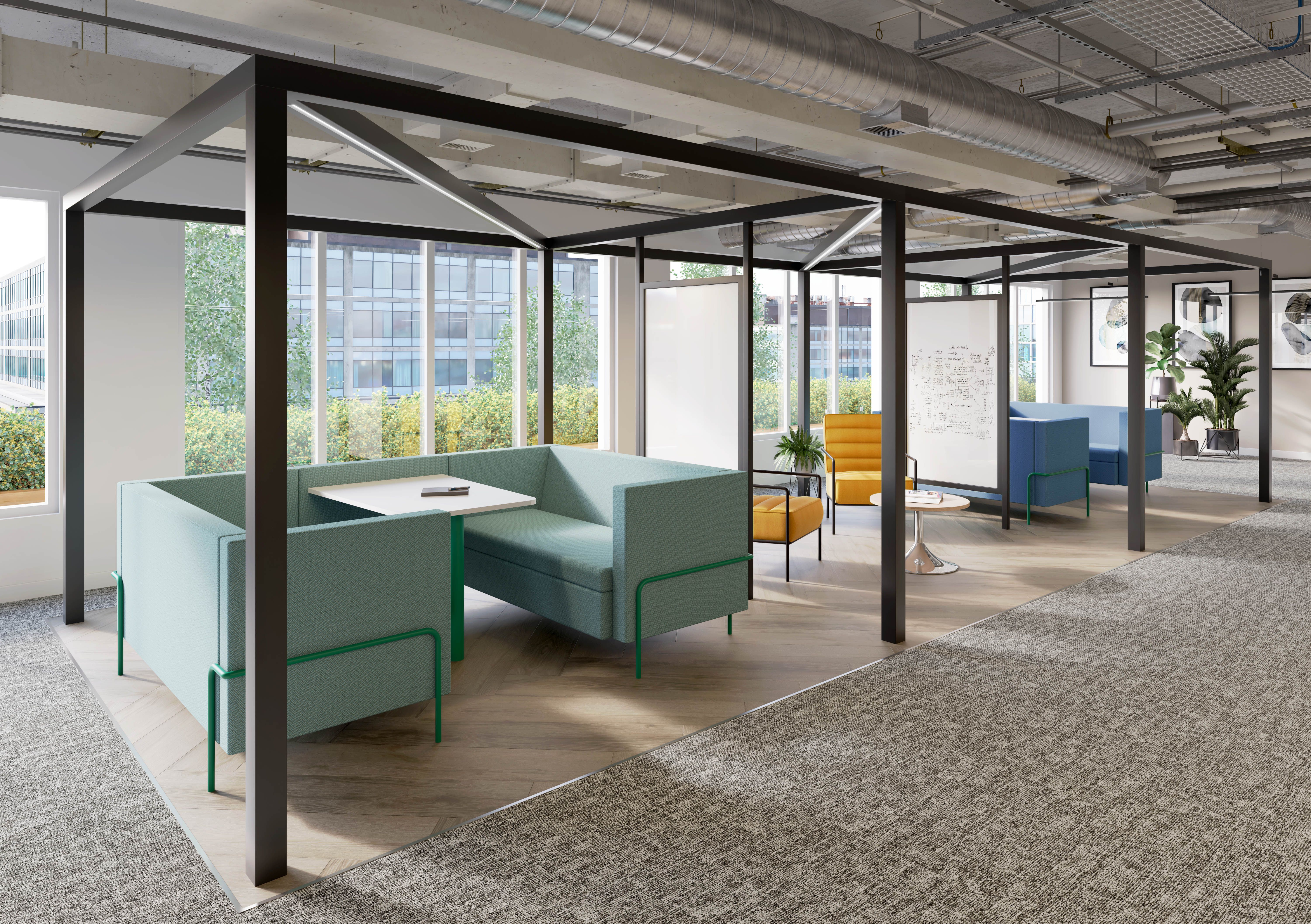Creating collaborative workspaces that work for everyone seems like a simple concept, doesn’t it? But sometimes, we lose focus on what a co-working space means and what it can elevate for the individuals working within that space.
Although there is still a need for focused working spaces in the office setting, creating adaptable and collaborative workspaces is becoming the norm in the world of work.
THE BENEFITS OF CO-WORKING SPACES:
Now more than ever, connecting with people and places is vital. Co-working spaces allow people to come together, collaborate and connect.
Here are just a few benefits to designing co-working spaces;

1. INCREASED PRODUCTIVITY & CREATIVITY BOOST
Open, modern, and comfortable co-working spaces should be optimised for productivity and creativity. Modern co-working spaces should be designed to adapt to a range of different work styles, practices and needs, providing a variety of settings, seating, desking, and accessories that can be easily tailored to all employees.
Co-working spaces can also offer employees a much-needed creativity boost. When employees get to work closely in open, modern, and comfortable spaces with other like-minded people, they can feel inspired with ideas that could be applied to projects and tasks. Switching up your working environment is not only a great way to refresh your head but also let you bounce ideas off other employees who made creative contributions that remote and isolated desk work wouldn’t usually allow for.
More and more employees are starting to find that the personal connections that co-working and open workspaces make possible (such as soft seating, breakout spaces, biophilia etc…) helps them to feel more engaged, motivated, and focused in their daily work. Weaving nature (biophilic design) into working environments can adapt your space entirely to create a more calming atmosphere, allowing for an increased sense of focus and improved performance.
2. NETWORKING AND COLLABORATION OPPORTUNITIES
The importance of conversations and collaboration in the office cannot be overstated. Employees are starting to come back into the office on a more regular basis now, so providing space where employees can catch up and have space for project or private meetings is vital to the working environment.
Coworking spaces also offer businesses the opportunity to hold networking events, whether that be for new employees to come and take a look around, customers and clients to come and visit an open showroom/ workspace, or even to create new business partnerships, co-working spaces can show the versatility that they’ll be looking for.


3. FLEXIBILITY AND ADAPTABILITY
Over the last few years, flexibility in the workplace has become a must. Flexibility offers employees the opportunity to work in whatever way works best for them, whether that be in comfortable, relaxing spaces with soft seating or individual booths designed to maximise productivity and creativity.
Creating a flexible and adaptable workspace allows employees to break out of their comfort zones and focus on work from new perspectives and dive back into collaborative and project work that is at the heart of what a co-working space is. Being able to move about spaces freely, changing from desk work to casual meetings in dens or booths, creates an atmosphere where all employees feel relaxed and at home in their workspace.
4. WELLNESS, WELLBEING, WORK-LIFE BALANCE
Accessibility for everyone: Inclusivity in the workplace is paramount to making everyone feel safe and connected and supported. Think about creating easy access to all parts of the working environment, and try not to overcrowd it, leaving a wide space for people to travel through. Biophilic design can help to boost mood, focus and creativity as well as create cohesion and positivity among employees.

HOW TO DESIGN A CREATIVE CO-WORKING SPACE:
Here at TC, we think flexibility and creativity is key to creating a space that works for all employees’ needs and requirements. Will you be making any changes to create a more flexible and interesting workspace?

